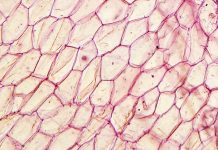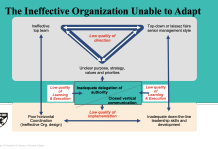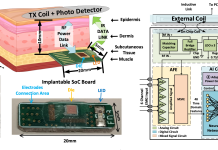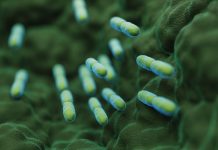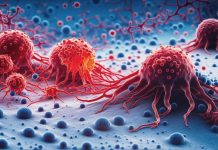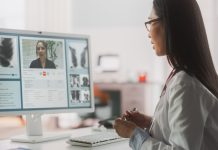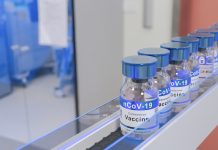Open Access Government produces compelling and informative news, publications, eBooks, and academic research articles for the public and private sector looking at health, diseases & conditions, workplace, research & innovation, digital transformation, government policy, environment, agriculture, energy, transport and more.
Home 2024
Archives
Confronting digital ageism: Towards a better aging future
Kim Sawchuk, Professor of Communication Studies at Concordia University, explores tackling digital ageism to build a better future for aging.
Suggestions for a research-focused executive education course on gender and entrepreneurship
Jennifer Jennings from the University of Alberta teamed up with policy professional Jessica Carlson to share ideas for bridging the academic-policy divide at the nexus of gender and entrepreneurship.
Combating drought to increase soil water retention in vineyards
Professor Pete W. Jacoby, from Washington State University, researches methods to combat impacts of global warming by enhancing soil water retention for vineyard resilience.
Fluorescent sensors for detecting anions
Nicola Edwards, Associate Professor of Chemistry at the University of St. Joseph, is conducting research on the development of fluorescent sensors for anion detection.
When common recommendations for cultivating in cold soils inadvertently thaw permafrost
Melissa Ward Jones, details when common recommendations for cultivating in cold soils inadvertently thaw permafrost, starting with the challenges of cultivating at high latitudes.
What imaging reveals about engineered endosymbionts
Ashley V. Makela and Christopher H. Contag from the Institute for Quantitative Health Science and Engineering, walk us through watching living therapeutics in action, including what imaging reveals about engineered endosymbionts.
Empowering trans and nonbinary students against sexual assault
Sarah Peitzmeier, Micah Hopkins and Charlene Y. Senn describe how an effective sexual assault resistance program for women is being adapted for trans and nonbinary students.
Religiosity, transcendent accountability, and civic engagement
Academic experts from Baylor University and Pepperdine University explore religiosity, transcendent accountability, and civic engagement.
The “Silent Killers” of business success
Dr. Michael (Mike) Beer, Professor Emeritus at Harvard Business School, explains the “silent killers” of business success that top management are unaware of.
AI-empowered neural processing for intelligent human-machine interface and biomedical devices
Jie Gu, Associate Professor from Northwestern University, examines AI-empowered neural processing for intelligent human-machine interface and biomedical devices.
National sepsis strategy to improve knowledge, prevention and treatment
Discover what you need to know about sepsis from a top group of experts, including their call for a national sepsis strategy to improve its knowledge, prevention, and treatment to save lives.
Personalized cancer medicines
Dr. Priya Hays, PhD, CEO and Science Writer at Hays Documentation Specialists, LLC, guides us through the world of personalized cancer medicines.
Getting leptospirosis onto the lists of neglected tropical diseases
Leptospirosis is a globally important infectious disease, but neglected to the extent that it’s not on WHO’s or FDA’s neglected tropical diseases lists; this needs to change.
Recruiting retired specialists back into part-time practice via telemedicine
Richard J. Santen, MD, Emeritus Professor of Medicine at the University of Virginia in Charlottesville, Virginia, U.S., looks at how to recruit retired specialists to practice part-time via telemedicine.
Storying the world: Decolonizing classrooms
Geraldine Balzer, Associate Professor from the College of Education at the University of Saskatchewan, discusses the importance of decolonizing classrooms by telling stories about the world.
Asbestos-induced autoantibodies across Libby demographics
Aiden Niblett, Jean Pfau, and Kinta Serve focus on asbestos-induced autoantibodies across different demographics in Libby. They emphasize the importance of understanding the impact of asbestos.
The different facets of biodiversity
Professor F. Guillaume Blanchet from Université de Sherbrooke explores the various aspects of biodiversity and the challenge involved in monitoring it.
Wrestling with the deepfakes: Detection and beyond
Siwei Lyu, SUNY Empire Innovation Professor from the University at Buffalo, State University of New York, delves into detection and beyond in the realm of DeepFakes, starting with a look at what they are.
Learning from the COVID-19 Pandemic: Next-generation universal vaccines and immunotherapeutic research
With the COVID-19 pandemic behind us, we need to focus on universal vaccines and/or immunotherapeutic strategies and technologies to tackle ongoing endemic infections with SARS-CoV2, influenza, and RSV and prepare for any future pandemics, says Dr Babita Agrawal.
Transnational flows of living cultural heritage: African screen media in the world
Dr. Sheila Petty, FRSC, Professor of Media Studies and SaskPower Research Chair in Cultural Heritage, at the University of Regina, explores transnational movements of living cultural heritage in African screen media.






